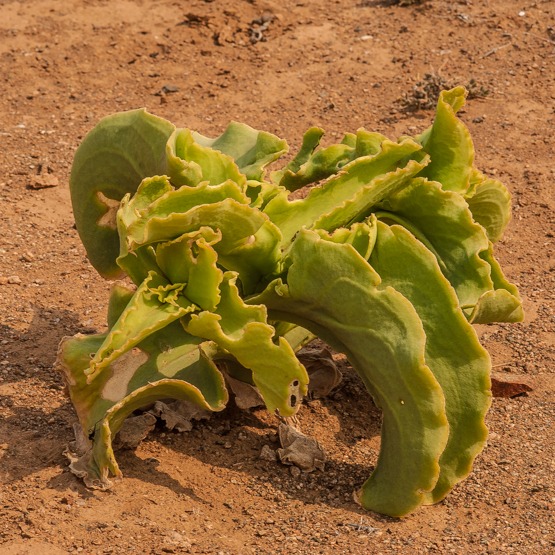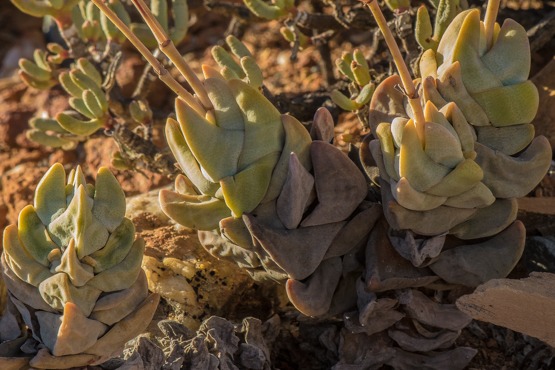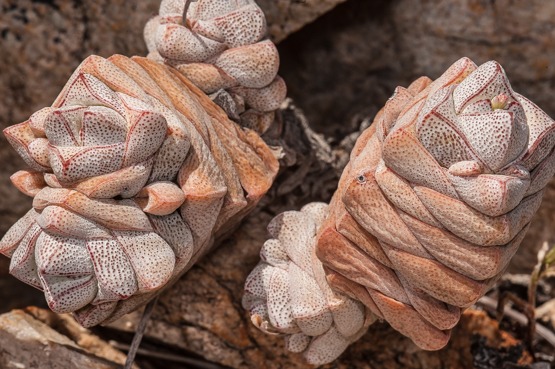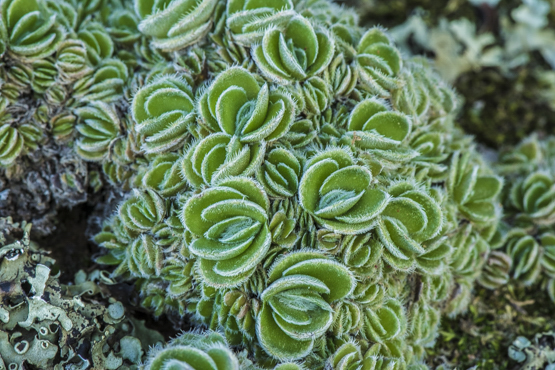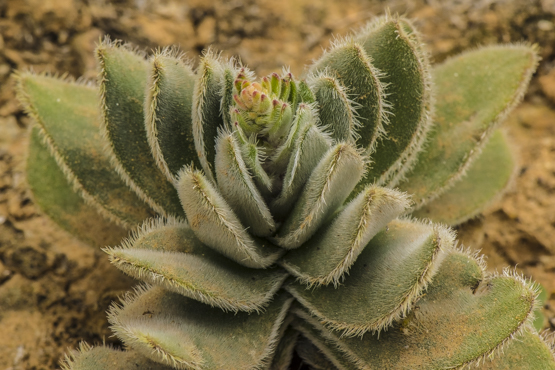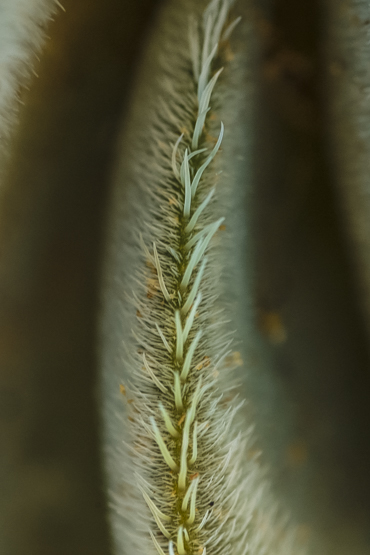Plants of this species are the largest in the genus and are sometimes nicknamed “elephant’s toilet paper” because of the enormous leaves. As a rule, they occur on sandy plains in southwestern Namibia and northwestern Namaqualand.
Although their lifespan is usually not more than two years, they may reach a height of 1.5 m.
At first, the plant forms a rosette of leaves with flowering side branches, after which the internodes in the rosette elongate and form new rosettes and flowering branches.
Usually the stems are clearly 4-angled and winged, up to as much as 4 cm in diameter.
The leaves are egg-shaped to triangular, with more or less undulating margins; they are very large (lower ones up to 40 x 25 cm), with small bladder-cells.
Flowers appear in Sept.-Nov.; they are 4-6 cm across, pink to pale pink, with a white or slightly green base and very numerous petals, staminodes and stamens. The fruits have 5 compartments.
